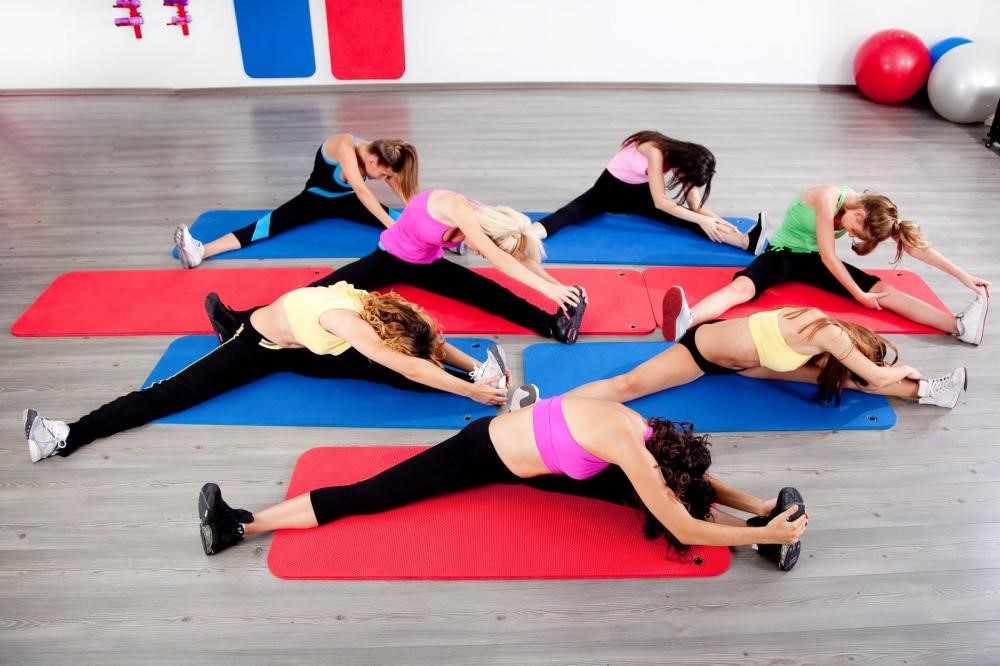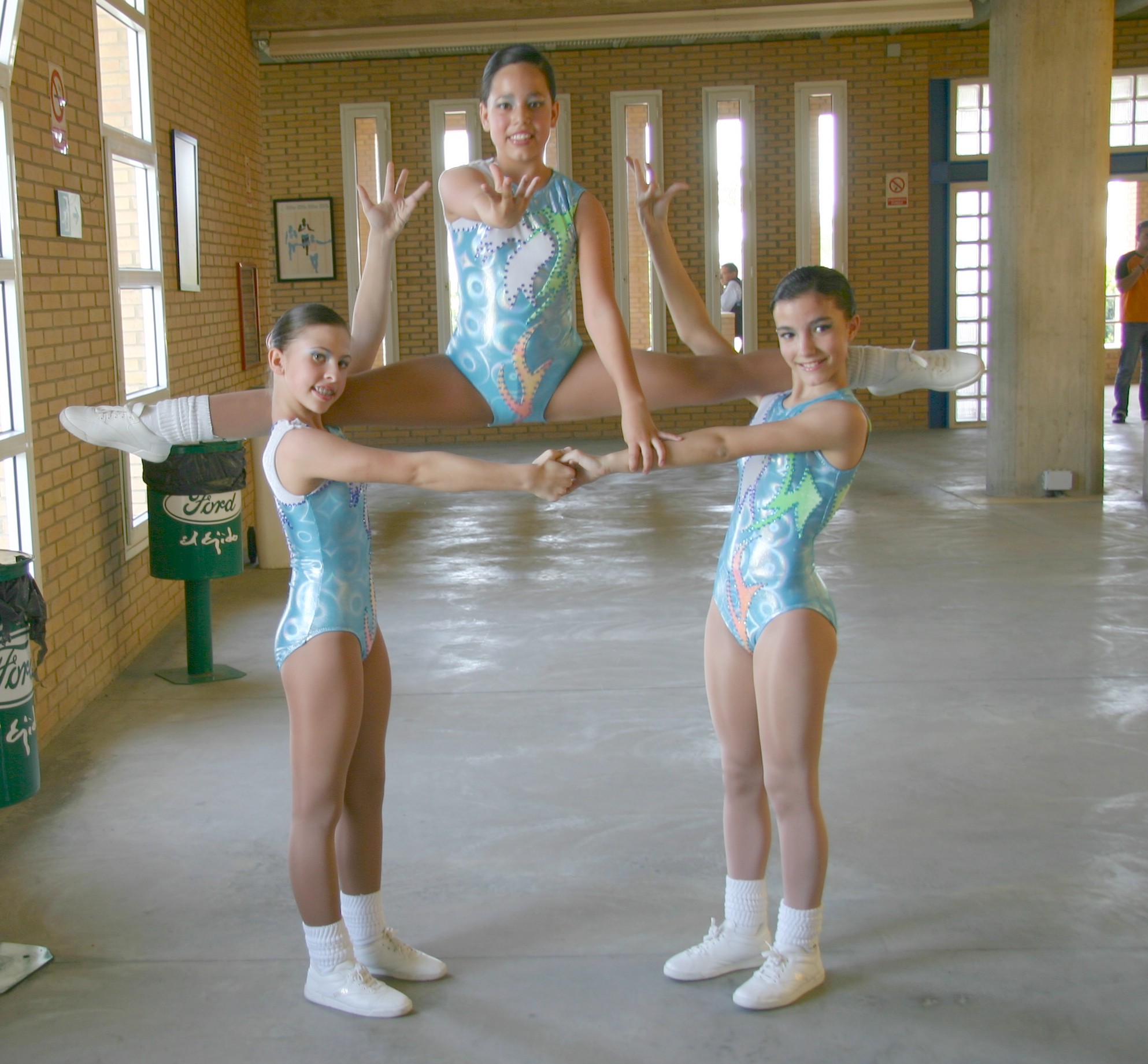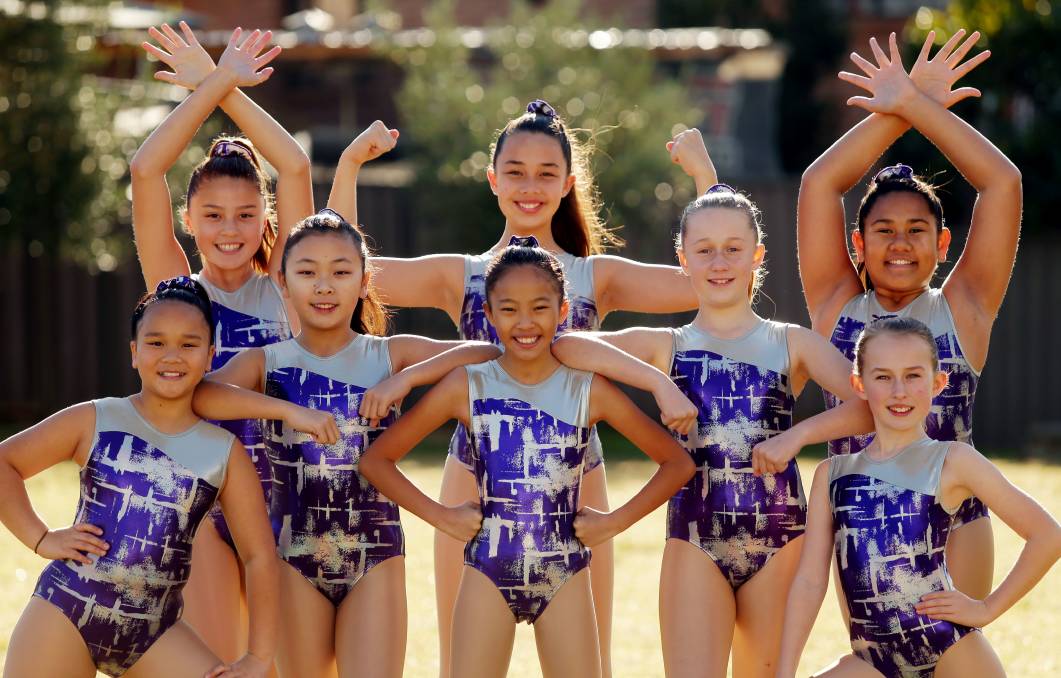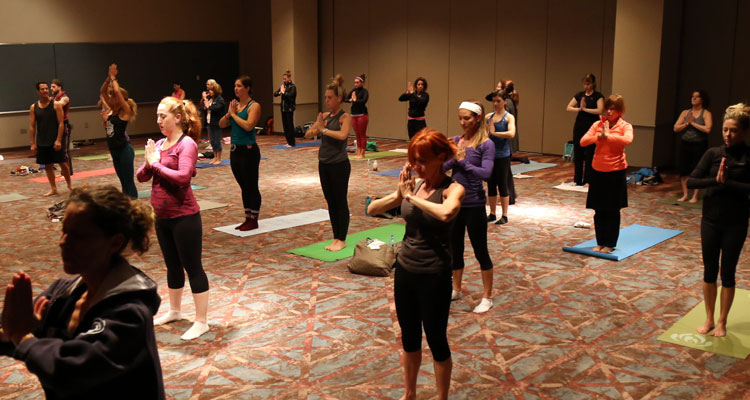Aerobics is a form of physical exercise that combines rhythmic aerobic exercise with stretching and strength training routines with the goal of improving all elements of fitness (flexibility, muscular strength, and cardio-vascular fitness). It is usually performed to music and may be practiced in a group setting led by an instructor (fitness professional), although it can be done solo and without musical accompaniment. With the goal of preventing illness and promoting physical fitness, practitioners perform various routines comprising a number of different dance-like exercises. Formal aerobics classes are divided into different levels of intensity and complexity. A well-balanced aerobics class will have five components: warm-up (5–10 minutes), cardio vascular conditioning (25–30 minutes), muscular strength and conditioning (10–15 minutes), cool-down (5–8 minutes) and stretching and flexibility (5–8 minutes). Aerobics classes may allow participants to select their level of participation according to their fitness level. Many gyms offer a variety of aerobic classes. Each class is designed for a certain level of experience and taught by a certified instructor with a specialty area related to their particular class.
Aerobics
History
Both the term and the specific exercise method were developed by Dr Kenneth H. Cooper, an exercise physiologist, and Col. Pauline Potts, a physical therapist, both of the United States Air Force. Cooper, an exercise enthusiast, was puzzled about why some people with good muscular strength were prone to perform poorly at activities such as long-distance running, swimming, and bicycling. He began using a bicycle ergometer to measure sustained performance in terms of a person’s ability to use oxygen. In 1968, he published Aerobics, which included exercise programs using running, walking, swimming and bicycling. At the time the book was published there was increasing awareness of the need for increased exercise due to widespread weakness and inactivity. Cooper published a mass-market version “The New Aerobics” in 1979.
Aerobics gained worldwide popularity after the release of Jane Fonda‘s exercise videos in 1982.


Moves & Techniques:
Often moves are referred to as Reebok step moves in reference to one of the first makers of the plastic step commonly used in gyms.
The “basic” step involves raising one foot onto the step, then the other so that they are both on the step, then stepping the first foot back, followed by the second. A “right basic” would involve stepping right foot up, then the left, then returning to the floor alternating right then left.
Some instructors switch immediately between different moves, for example between a right basic and a left basic without any intervening moves, effectively “tapping” the foot without shifting weight; tap-free or smooth stepping alternates the feet without “taps”.
Common moves include:
- Basic Step
- Corner knee (or corner kick)
- Repeater knee (aka Triple knee)
- T-Step
- Over-the-Top
- Lunges
- V-Step
- Straddle Down
- L-Step
- Split Step
- I-Step

Associations
Like other forms of exercise, step aerobics helps burn calories and fat. The number of calories burned depends on the speed of movements, step height, length of exercise, and the persons height and weight.
Championships
The National Aerobic Championships is a competition of aerobic gymnastics started in 1984 in the United States. Founded by Sport Fitness International, it was the first major championships in the sport predating the Aerobic Gymnastics World Championships by 11 years. From 1988 onwards the individual events were separated by gender. The sport became popular around the world after it gained popularity in the USA when major championships were aired on ESPN during the height of the fitness movement in the USA.


Formation of FISAF
The Federation of International Sports, Aerobics and Fitness (FISAF) is an international non-profit “umbrella organization” active in over 40 countries. It is self-described as “the largest fitness industry organisation in the world” and “the largest instructor certification agency in the world”.

